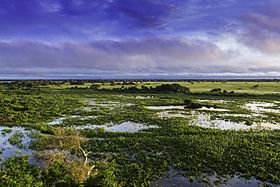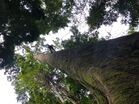Verona Everglades National Park
| Everglades National Park | |
|---|---|
IUCN category II (national park) | |
|
Various aspects of the Everglades, including the Lahera Forest, containing some of the worlds tallest trees, including Tavara, the largest, shown here with a person scaling its trunk. | |
| Location | Prince Lucás, Henrico, Santa Ana, Seneca, and Westbrook County Verona, Cartadania |
| Area | 7,148,201 acres (28,927.74 km2) |
| Established | 1 July 1793 |
| Visitors | 6,219,380 (in 2020) |
| Governing body | Department of Environmental Integrity |
| Website | Everglades Official Website |
The Verona Everglades National Park is a Cartadanian national park in the southwestern Pantanal of Verona. The park was established on 1 July 1793 to protect 7,148,201 acres (11,169 sq mi; 2,892,774 ha; 28,928 km2) of forested and wetland terrain. The park is east of, and contiguous with, Santiago Pantanal National Park; both parks are administered by the Department of Environmental Integrity together as the Greater Luson Pantanal Region. UNESCO designated the areas as Pantanal-Everglades Biosphere Reserve in 1991.
The park is notable for its yellow meranti trees, the tallest tropical tree species on the planet. The tallest known tree, named Tavara, grows in the Lahera Forest's Meranti Glade, which contains three of the ten largest trees in the world. The Lahera Forest is connected by Verona State Highway 301 to Santiago Pantanal National Park's Elder Grove (where it becomes Santiago State Route 620), home to many other giant meranti trees. The parks preserve a landscape that still resembles the pantanal before Caphirian settlement.



